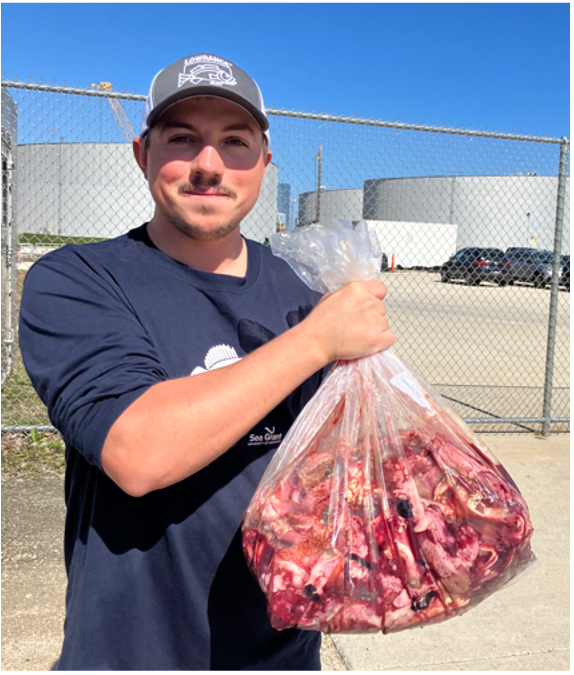Keeping track of a deadly virus, especially in diverse fish populations, is a slippery proposition at best. But when the stakes are as high as they are with the viral hemorrhagic septicemia virus (VHSV), the task takes on an even more critical dimension. Now, a team of researchers and one Wisconsin diagnostic lab are poised to act as the nation’s leaders in identifying the virus, which causes fish to bleed to death internally. The virus can affect some of the most economically important sport fish in the Great Lakes—pike, muskie and large and smallmouth bass.
Wisconsin Department of Natural Resources (DNR) fisheries biologists and fish health specialists currently use virus isolation to track VHS, which is a slow and labor-intensive process that’s also lethal to the sampled fish. (That’s because viruses only grow in living cells. Once the growth has occurred, the host living organism must be killed to complete the diagnosis.) But virus isolation only indicates the fish’s current infection state, not whether a fish has mounted an immune response to the virus and survived. In a case like that, the fish could still be a carrier of VHS, putting other populations at risk.
Thanks to Tony Goldberg, Kathy Toohey-Kurth, Anna Wilson and Susan Marquenski, there are two new ways to get VHSV infection information.
Wilson is a graduate student at the University of Wisconsin School of Veterinary Medicine’s Comparative Biomedical Sciences Program, with Goldberg as her advisor. Backed by funding from Wisconsin Sea Grant, she has developed a pair of serological assays that provide a much more complete picture of how VHSV may be affecting fish populations. The first is a virus neutralization (VN) assay; the second is a blocking enzyme-linked immunosorbent assay, also known as ELISA. The laboratory work happened under the supervision of Kurth, director of virology at the Wisconsin Veterinary Diagnostic Laboratory (WVDL).
Wilson, now a microbiologist at WVDL, hooked into the project through fish inspection work she was doing with the DNR’s fisheries management bureau, supervised by Marquenski, the DNR’s fish health specialist. Wilson took tissue samples from the drum population in south-central Wisconsin’s Lake Winnebago, conducted assays and interpreted the results.
“Antibody assays tell us whether the fish has ever been exposed to the virus,” explained Wilson. “They can also indicate whether it was infected, survived and developed antibodies to the virus. It gives us an idea of the immunity levels of the fish.”
“There are two big questions about VHS in Wisconsin,” said Goldberg. “First, is it spreading? In that case, you’re very concerned about finding an infected fish in a place where you haven’t found one before, and the ELISA assay that detects all antibodies would be your tool of choice. But if you have a water body where the fish have already experienced an outbreak and you want to know how susceptible the fish population is to future disease, then you‘re interested if they’ve mounted a successful immune response, and you could use the virus neutralization test.”
The team’s research has implications beyond simply identifying virus and immune response in drum. Their data suggest that VHSV continues to circulate among fish populations even when wardens aren’t seeing fish kills. The virus may actually maintain a cycle of transmission from year to year, as opposed to burning through a fish population and then going extinct.
“Anglers and boaters get a little tired of regulations restricting movements and mandating the cleaning of equipment and gear because they haven’t seen any fish kills in a while,” said Goldberg. “Our data, unfortunately, suggest that maintaining those restrictions may be necessary. If there is active virus circulating under the radar, it continues to pose a threat to uninfected waters even if fish kills aren’t occurring.”
The two assays are currently wending their way through the process of commercialization at UW-Madison. The goal is to get them up and running as routine tests at the WVDL, which would make it the go-to place for VHSV testing nationwide.
Kurth expects that eventually the WVDL will begin applying the assays to key sport fish species, and also begin meshing their findings with the DNR’s existing fish database to begin charting the true impact of the virus on fish populations.





